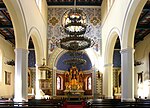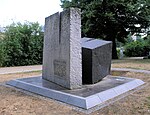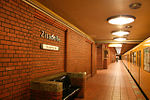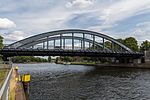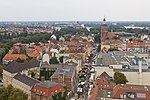Spandau Citadel
Buildings and structures in SpandauForts in GermanyHistory museums in GermanyInfrastructure completed in 1594Military and war museums in Germany ... and 3 more
Museums in BerlinRenaissance architecture in GermanyWater castles in Germany

The Spandau Citadel (German: Zitadelle Spandau) is a fortress in Berlin, Germany, one of the best-preserved Renaissance military structures of Europe. Built from 1559–94 atop a medieval fort on an island near the meeting of the Havel and the Spree, it was designed to protect the town of Spandau, which is now part of Berlin. In recent years it has been used as a museum and has become a popular tourist spot. Furthermore, the inner courtyard of the Citadel has served as an open air concert venue in the summertime since 2005.
Excerpt from the Wikipedia article Spandau Citadel (License: CC BY-SA 3.0, Authors, Images).Spandau Citadel
Am Juliusturm, Berlin Haselhorst
Geographical coordinates (GPS) Address External links Nearby Places Show on map
Geographical coordinates (GPS)
| Latitude | Longitude |
|---|---|
| N 52.541388888889 ° | E 13.212222222222 ° |
Address
Zitadelle Spandau
Am Juliusturm 64
13599 Berlin, Haselhorst
Germany
Open on Google Maps
